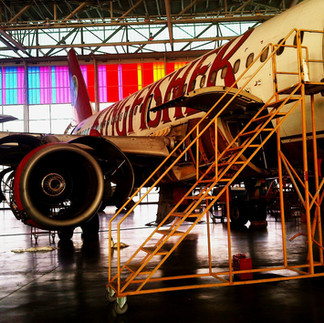#18 HUNGARY Green Velocity - Crash the Habit: Μικρές Ιστορίες
- EERcomt
- 21 minutes ago
- 2 min read
Παρακάτω παρατίθεται μία από τις 44 ιστοριούλες που απαρτίζουν τη συλλογή μαρτυριών από ατυχήματα σε στεριά, αέρα και θάλασσα 11 νεαρών ατόμων από διάφορα μέρη της Ευρώπης και του κόσμου.
ΙΣΤΟΡΙΑ #18
ΑΚΤΟΠΛΟΪΚΕΣ ΓΡΑΜΜΕΣ
by Faris Qaryouti (Jordanian), European Solidarity Corps; ESAI EN ROI Volunteer
ESC volunteering in teams DHIAfest campaign diffusion International Campaign
Hungary|| Transportation Accident Stories
Supporting Organization: FEKETE-SEREG
Aviation accidents, though statistically rare, have left a lasting impact on public consciousness, policy, and the evolution of air travel safety. From early mechanical failures to complex modern crashes, each incident has helped shape the protocols that make flying safer today.
One of the deadliest air disasters in history occurred in 1977 at Tenerife Airport, when two Boeing 747s collided on the runway in heavy fog, killing 583 people. Miscommunication between pilots and air traffic control was the primary cause — a stark reminder of the importance of clear language and protocol.
Mechanical failures have also played a major role in aviation tragedies. The crash of United Airlines Flight 232 in 1989, caused by a catastrophic engine failure, stands out not only for its drama but also for the crew’s incredible effort to land the damaged aircraft, saving over half of the 296 people on board.
Modern aviation accidents, like Air France Flight 447 (2009), highlight a different concern: automation. In that case, a failure in speed sensors combined with pilot confusion led to a fatal stall over the Atlantic Ocean. It raised global concerns about how well pilots are trained to handle manual flying in emergencies.
Despite these tragedies, air travel remains the safest mode of transportation. Each accident has led to tighter regulations, better pilot training, stronger aircraft design, and improved communication systems.
Today, black boxes, real-time data monitoring, and global safety organizations ensure that no crash goes without intense investigation. While no system can eliminate risk entirely, aviation continues to learn from every incident — ensuring that hard-won lessons are never forgotten.
































